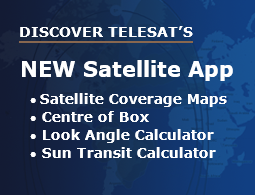Organizations are starting to shift toward private networks such as LTE and 5G. That’s because these networks offer high speed, low latency, greater coverage both inside and outdoors, high capacity, better security controls, and more.
Private LTE or 5G can be especially beneficial for organizations with far-flung locations that struggle to gain fibre connectivity. However, there are several factors to consider before deploying a private LTE/5G network at a remote location.
The first decision to make is whether LTE or 5G is best for the enterprise. One distinct difference between them is speed. An IT Pro study found that LTE should be able to reach download data transfer at 150Mbps and 50Mbps for uploads. Yet the research found that variables such as location — an issue for oil and gas rigs, mining facilities, and other remote operations — can significantly reduce LTE speeds to 20Mbps and 10Mbps, respectively.
On the other hand, 5G networks have the potential to reach download speeds of 10 Gbps. This high speed is possible because 5G works on higher frequency bands than LTE, which also means 5G can support greater bandwidth capacity.
Another advantage of private 5G is that it can support more data and devices with low latency. This can be a substantial benefit for any organization that wants to take advantage of all the data they’re generating at remote sites.
For example, a mining operation produces enormous volumes of data — such as geographic viability data points, machine data, human health and safety information, weather conditions, etc. This data must be pumped back, or backhauled, to the headquarter data center or the cloud, where high-performance servers can use machine learning models to process the information for insights.
The backhauled traffic requires a robust and resilient backbone pipe that, just like the private network, has low latency. That’s why the combination of a private 5G network and Low Earth Orbit (LEO) satellite connectivity is good for enterprises with remote operations. Enterprise LEO networks, such as the Telesat Lightspeed constellation, provide low-latency connectivity — 30-50 milliseconds for a roundtrip radio frequency signal between the ground and satellite.
Another advantage of LTE and 5G private networks is network slicing, where applications and data traffic is segmented based on priority. In the mining example, an enterprise would likely prioritize health and safety data over the crew’s ability to watch streaming tv services. For remote locations, it is important to select an enterprise-class LEO network that can support the same network slicing in the backhaul link.
Although this type of control is available today in fibre networks, Telesat Lightspeed will make it available in a fully programmable, API-first model via a global satellite network. Thus, enterprises will gain the ability to extend 5G enterprise connectivity to their remote locations with a robust LEO backhaul link.
Overall, private LTE/5G networks combined with robust satellite connectivity provide enterprises a great opportunity to improve data and communications performance at the sites of their remote operations.




